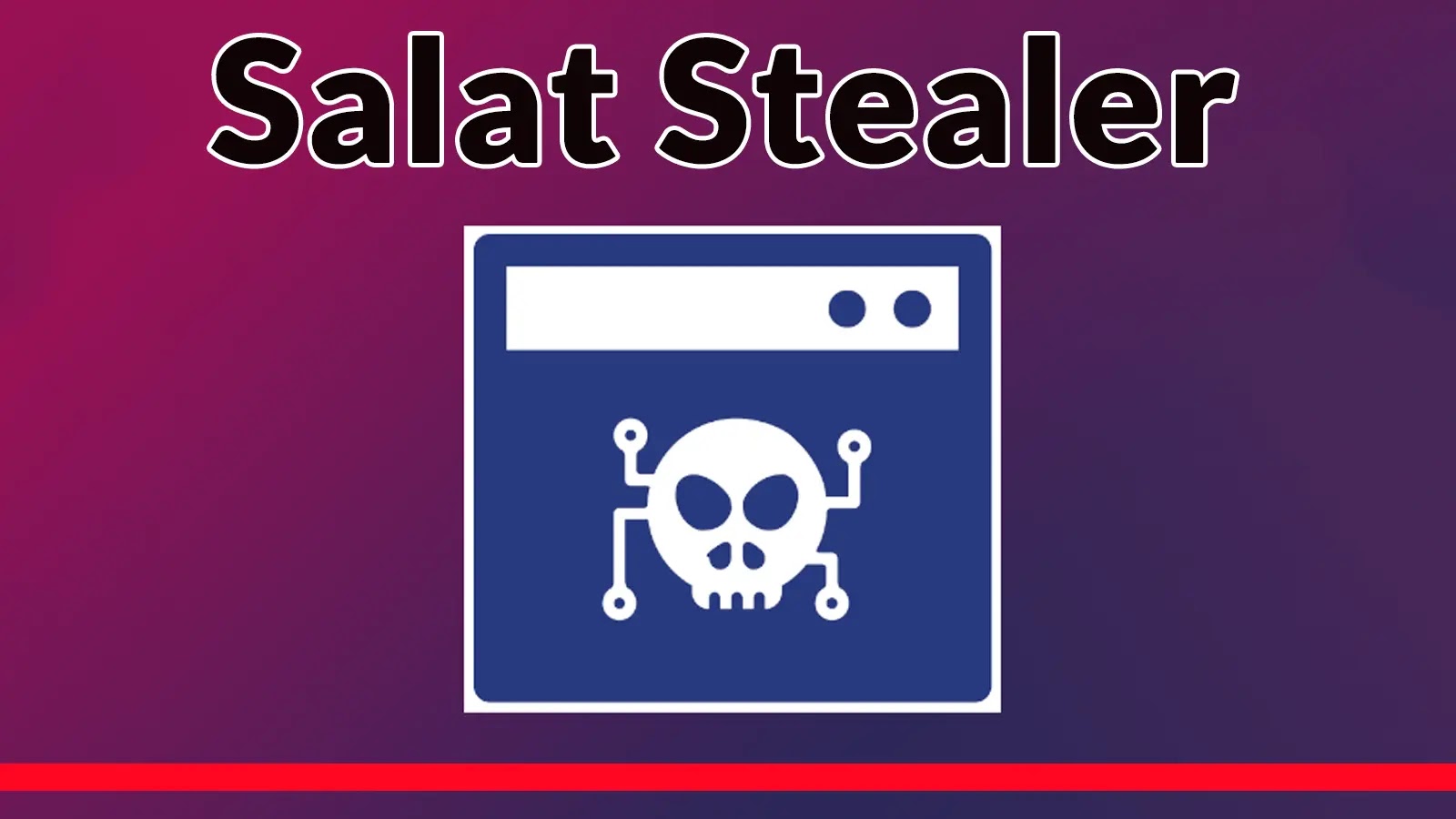
Salat Stealer Exfiltrates Browser Credentials Via Sophisticated C2 Infrastructure
Salat Stealer: Unpacking a Pervasive Threat to Browser Credentials
The digital landscape is under constant siege, with new and evolving threats emerging regularly. Among these, information stealers pose a particularly insidious danger, directly compromising sensitive user data. A recent and significant entrant to this threat arena is Salat Stealer, a sophisticated Go-based infostealer specifically designed to exfiltrate browser-stored credentials and cryptocurrency wallet data from Windows endpoints. Its prevalence and advanced evasion techniques demand immediate attention from cybersecurity professionals.
First observed in August 2025 (as per the source, please note this is a future date and may be a typo in the original source material), Salat Stealer represents a growing trend of adversaries leveraging robust development frameworks for malicious purposes. This post delves into the operational specifics of Salat Stealer, its indicative behaviors, and crucial actions for mitigation.
Understanding Salat Stealer’s Modus Operandi
Salat Stealer distinguishes itself through several key characteristics and functionalities that make it a formidable opponent:
- Targeted Data Theft: Its primary objective is the harvesting of credentials stored within web browsers and data from cryptocurrency wallets. This directly impacts user financial security and online identity.
- Go-Based Development: Written in Go, the malware benefits from cross-platform compilation capabilities and a compiled binary structure that can be more challenging for traditional signature-based detection.
- Evasion Techniques: Salat Stealer employs a variety of sophisticated evasion tactics to bypass security controls:
- UPX Packing: This common executable packer is used to compress the malware’s binary, making static analysis more difficult and altering its signature.
- Process Masquerading: The malware attempts to hide its true nature by imitating legitimate system processes, thereby evading detection by behavior-based security solutions.
- Sophisticated C2 Infrastructure: While the specifics are not detailed in the source, the reference to a “sophisticated C2 infrastructure” implies a well-managed and potentially resilient command-and-control network, crucial for data exfiltration and maintaining persistence.
- Social Engineering Distribution: Operators actively advertise Salat Stealer, indicating a well-established distribution model that likely relies on deceptive tactics to trick users into execution. This often includes phishing campaigns, malicious attachments, or compromised websites.
Indications of Compromise (IoCs)
While specific hash values or C2 domains were not provided in the source material, typical IoCs for malware like Salat Stealer often include:
- Suspicious network connections to unknown or unusual IP addresses/domains (potential C2 communication).
- Presence of newly created or modified files in unusual directories (e.g., in user profile folders or temporary directories).
- Unexpected process activity, particularly processes with names resembling legitimate system processes but running from atypical locations or with unusual parent processes.
- Unexplained changes within browser settings or files.
Remediation Actions
Effective defense against infostealers like Salat Stealer requires a multi-layered security approach. Organizations and individuals should prioritize the following actions:
- Endpoint Detection and Response (EDR): Deploy and configure EDR solutions to monitor endpoint activity in real-time. EDR systems can detect and alert on suspicious behaviors indicative of infostealer activity, such as process injection, unusual file modifications, or suspicious network connections.
- Behavioral Analysis: Focus on security solutions that utilize behavioral analysis rather than solely relying on signatures. This is crucial for detecting Go-based malware and UPX-packed binaries that may continually change their signatures.
- Regular Software Updates: Ensure operating systems, web browsers, and all installed software are kept up-to-date with the latest security patches. This mitigates vulnerabilities that malware might exploit for initial access.
- Email Security Gateway: Implement robust email security solutions to filter out phishing attempts and malicious attachments, which are common vectors for malware distribution.
- User Awareness Training: Conduct regular security awareness training for all users. Educate them about social engineering tactics, the dangers of opening suspicious links or attachments, and the importance of strong, unique passwords.
- Multi-Factor Authentication (MFA): Mandate MFA for all online accounts, especially those containing sensitive information. Even if credentials are stolen, MFA acts as a critical second line of defense.
- Web Browser Security: Encourage the use of browser security features, such as built-in password managers with strong encryption, and regular clearing of browser cache and cookies. Consider enforcing secure browser configurations via group policy in enterprise environments.
- Network Segmentation: Segment networks to limit the lateral movement of malware in the event of a compromise.
- Incident Response Plan: Have a well-defined incident response plan in place to address potential infostealer infections promptly and effectively.
Tools for Detection and Mitigation
| Tool Name | Purpose | Link |
|---|---|---|
| Sysmon | Advanced logging and monitoring for Windows, can detect suspicious process creation and network connections. | Microsoft Sysmon |
| Volatility Framework | Memory forensics for analyzing memory dumps to detect hidden processes and malware artifacts. | Volatility Foundation |
| IDA Pro / Ghidra | Reverse engineering tools for analyzing packed binaries and understanding malware functionality. | Hex-Rays IDA Pro / Ghidra |
| Firewall (e.g., Windows Defender Firewall) | Network traffic filtering to block unusual outbound connections to C2 servers. | Windows Defender Firewall |
Conclusion
Salat Stealer highlights the persistent and evolving threat posed by information-stealing malware. Its use of Go, UPX packing, and process masquerading demonstrates a clear intent to evade traditional security mechanisms. Proactive and multi-layered defenses, combining robust technical controls with continuous user education, are essential for safeguarding against such sophisticated threats and protecting valuable digital assets.





